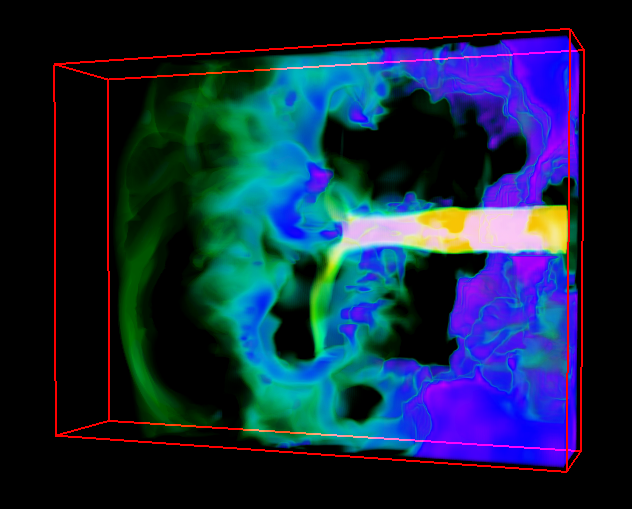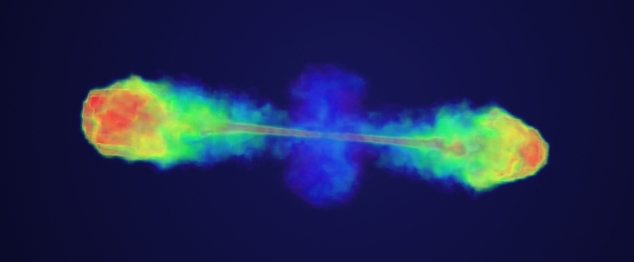Research overview
My research field is the physics of active black holes (active galactic nuclei, AGN)
and how they interact with their environment. Black hole activity is mainly seen as two phenomena:
Jets and quasars. Jets are powerful and collimated
 The interaction of jets with their environment happens on two different (but overlapping) scales. On the smaller scales, the narrow jet moves though the interstellar medium (ISM) of its host galaxy and interacts with it, so this is interaction
The interaction of jets with their environment happens on two different (but overlapping) scales. On the smaller scales, the narrow jet moves though the interstellar medium (ISM) of its host galaxy and interacts with it, so this is interaction
Once the tip of the jet has moved out of the galaxy, it interacts with the circum-galactic medium (CGM) and - for galaxy clusters - with the intra-cluster medium (ICM). The important difference between those two is the different structure of these media. The ISM is very structured on very small scales: it consists of dense clouds of cold gas that are surrounded by warm and hot gas of low density, so both density and temperature vary over many orders of magnitude.
 The CGM and IGM has only little structure and varies much less, so that densities are generally very low and temperatures are very high. This strong difference naturally changes the character of the interaction. More on the large scales interaction can be found on the page on magnetized AGN jets on large scales.
The CGM and IGM has only little structure and varies much less, so that densities are generally very low and temperatures are very high. This strong difference naturally changes the character of the interaction. More on the large scales interaction can be found on the page on magnetized AGN jets on large scales.
But jets are not only formed by black hole activity. They seem to be intimately linked with any accretion process. The very prominently also are launched from young stellar objects (YSO) during the early stages of star formation. When cold and dense gas clouds collapse gravitationally, jets are formed close to the forming star and propagate outwards. These jets are much slower in absolute numbers than AGN jets, but they are still much larger than the sound speed in the gas clouds, reaching several 100 km/s. It has been suggested that these jets stir up the surrounding gas and thereby limit the further formation of stars in that region. More on this can be found on my page on YSO jet feedback.
